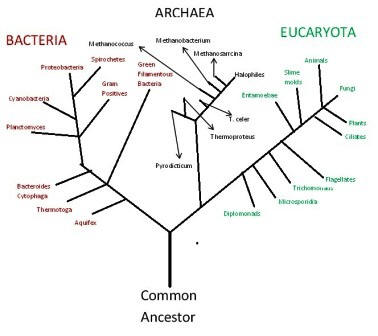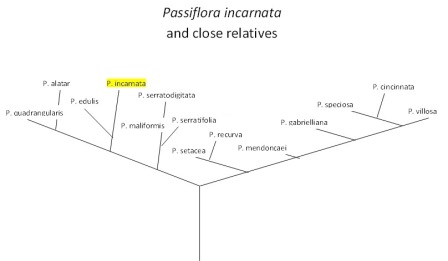
Classification
Domain: Eukaryote
This means that the organisms within this domain are multi-cellular.
Kingdom: Plantae
Characteristics of the Plantae kingdom include that fact that these
organisms are non-motile; meaning they stay in one spot. They also
have cell walls which are made of cellulose and a green pigment
called chlorophyll which is used during photosynthesis (see
nutrition).
Subkingdom: Tracheobionta
In the case of the purple passion flower, this subkingdom characterizes the plant as vascular plants which generally have a dominate diploid sporophyte phase (see reproduction).
Superdivision: Spermatophyta
The superdivision spermatophyta classifies Passiflora incarnata as seed plants.
Divison: Magnoliophyta
Members of this divison are also known as angiosperms. They have "closed seeds"; meaning the seeds are covered by either a shell or fruit body. In the case of the purple passion flower, the seed is covered by the passion fruit (see reproduction)
Class: Magnoliopsida
Plants that are part of this class usually have two seed leaves. These are dicots and most always have cambium tissue in the stems. This tissue is used to transport nutrients throughout the plant (see nutrition).
Subclass: Dilleniidae
The ovules in this subclass are usually attached to the ovary walls. There are 69 different families within this subclass.
Order: Violales
These organisms are characterized by flowers. They may be annual or perennial. They also traditionally have 5 sepals and 5 petals.
Family: Passifloraceae
These are flowering plants usually found in more tropical regions on the earth. These organsisms may be trees, shrubs, or vines in the case of the Passiflora incarnata.
Genus: Passiflora L.
Being in this genus means that the organisms are "creeping"; meaning they are usually vines. They also have large, brightly colored flowers.
Species: Passiflora incarnata L.
* The above information was found on the following site for classification information*
The first phylogenetic tree (found directly below) demonstrats how ALL of the kingdoms fit together. The second phylogenetic tree (titled "Passiflora incarnata and close relatives" shows how the Passiflora incarnata relates to only a few of its many relatives. Please note that I created both of these trees myself after doing research in several forms to gain knowledge about my subject.


Now that you know the classification, take a look at where this plant is found.